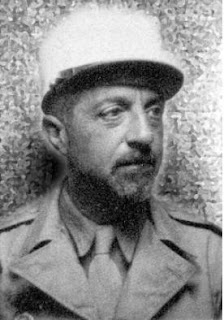San Marino - world's oldest sovereign state
Republic founded in 301 as Christian refuge
The Most Serene Republic of San Marino, an independent state within Italy, was founded on this day in 301. Situated on the north east side of the Apennine mountains, San Marino claims to be the oldest surviving sovereign state and constitutional republic in the world. Of the world's 196 independent countries, it is the fifth smallest, covering an area of just 61 square kilometres or 24 square miles. It is also the sole survivor of Italy's once all-powerful city state network, having outlasted such mighty neighbours as Genoa and Venice. San Marino grew from a monastic community, taking its names from Saint Marinus of Alba in Croatia, a Christian who had been working as a stonemason in Rimini when he was forced to flee Roman persecution and escaped to Mount Titano, where he built a church and founded both the city and state of San Marino. A constitution was written in the 16th century and its status as an independent state was accepted by the papacy in 1631. San Marino managed to survive the advance of Napoleon's armies in the late 18th century and then had its wish for continued independence honoured during the Italian unification process. Read more…
__________________________________________________________________
Pietro Locatelli – musician
Violinist astonished his listeners with his ability
Virtuoso violinist and Baroque composer Pietro Antonio Locatelli was born on this day in 1695 in Bergamo. He showed an astonishing talent for playing the violin while he was still a young boy and began playing with the orchestra at the Basilica di Santa Maria Maggiore in Bergamo when he was 14. In 1711, when he was 16 years old, he left to go to Rome and although it is not known whether he studied with Arcangelo Corelli before the composer’s death in 1713, he will have absorbed a lot of his influence by studying with the other eminent musicians in the city. In 1714 Locatelli wrote to his father, telling him that he was a member of the band of household musicians working for Prince Michelangelo I Caetani, a notable political figure and scholar. While in Rome he made his debut as a composer, producing his XII Concerto Grossi Op I in 1721. After 1725 his name crops up in Mantua, Venice, Munich, Berlin and Frankfurt and in every city he received rapturous acclaim for his violin performances. Many of his violin concertos were written at this time. He was known to be in Kassel in Germany in December 1728 where he was paid generously after his performance by Charles I Landgrave of Hesse-Kassel. Read more…
__________________________________________________________________
Giuseppe Bottai - Fascist turncoat
Ex-Mussolini minister who fought with Allies
Giuseppe Bottai, who served as a minister in the Fascist government of Benito Mussolini but finished the Second World War fighting with the Allies against Germany, was born on this day in 1895 in Rome. Bottai helped Mussolini establish the National Fascist Party and served as Minister of National Education under Mussolini between 1936 and 1943. He supported Mussolini’s anti-semitic race laws and founded a magazine that promoted the idea of a superior Aryan race. However, in 1943, following Italy’s disastrous fortunes in the Second World War, he was among the Fascist Grand Council members who voted for Mussolini to be arrested and removed from office. Later, after Mussolini was freed from house arrest by German paratroopers and established as head of the Italian Social Republic, Bottai was handed a death sentence and hid in a convent before escaping to join the French Foreign Legion, eventually assisting the Allies in both the invasion of France and the invasion of Germany. The son of a Roman wine dealer, Bottai studied at the Sapienza University of Rome until Italy declared war against Germany and the Central Powers in 1915. Read more…
________________________________________________________________
Giuseppe ‘Nino’ Farina – racing driver
The first Formula One world champion
Emilio Giuseppe Farina, driving an Alfa Romeo, became the first Formula One world champion on this day in 1950. The 43-year-old driver from Turin - usually known as Giuseppe or 'Nino' - clinched the title on home territory by winning the Italian Grand Prix at Monza. He was only third in the seven-race inaugural championship going into the final event at the Lombardy circuit, trailing Alfa teammates Juan Manuel Fangio, of Argentina, by four points and his Italian compatriot, Luigi Fagioli, by two. Under the competition’s complicated points scoring system, Fangio was hot favourite, with the title guaranteed if he was first or second, and likely to be his if he merely finished in the first five, provided Farina did not win. He could have been crowned champion simply by picking up a bonus point for the fastest lap in the race, provided Farina was no higher than third. Fagioli could take the title only by winning the race with the fastest lap, provided Farina was third or lower and Fangio failed to register a point. Farina could win the title only by winning the race, recording the fastest lap and hoping Fangio finished no better than third place. Read more…
Home













